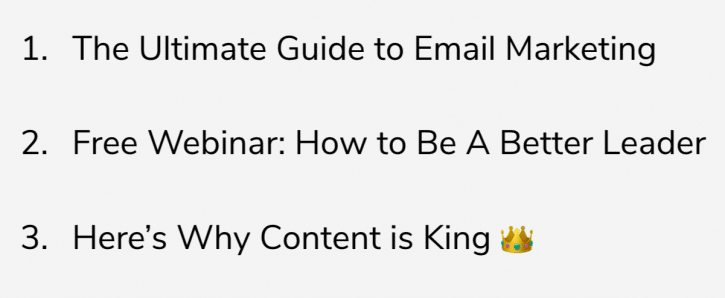Email marketing continues to be amongst the most successful ways of reaching out to customers. But what does a successful email marketing strategy really mean? Email marketing is both cost-efficient and effective.
In fact, email is 40 times more effective than social media for new customer acquisition. This is even more so for B2B marketing, where sales cycles are typically long. Moreover, 80% businesses say that it helps to boost customer retention. In fact, leading businesses use email marketing to upsell to existing clients.
So, give your business a head start with these B2B email strategies to drive new leads:
Strategy #1: Ensure Your Emails Are Mobile Friendly
Did you know that 60% of emails are opened on the cellphone? So, it’s no longer enough to only design desktop formatted emails for your email clients. Ensuring that your marketing emails are mobile friendly has become a necessity to engage with your existing and prospective customers. If your emails are not mobile friendly, business professionals may ignore them or even unsubscribe from your list.
Tips for Ensuring Emails are Both User and Mobile Friendly:
- Limit the subject line to be under 30 characters.
- Keep the subject line direct so that people know what they will read about when they open the email.
- Create pre-header text that relates either to benefits of your offering or customer problems that your offering addresses.
- Focus the content on how you’re offering will solve a business problem.
- Avoid attachments.
- Test your emails for various iOS and Android devices, with different screen sizes.
Strategy #2: Don’t Go Overboard with the Content
Your B2B email may be read by professionals during their working hours. So, respect people’s time. Keep the main body of your email short and simple. We understand that you’re excited about your company’s service or offering, but our advice is to avoid putting every detail into the content.
Tips for Limiting Email Content:
- Choose one topic for the email to be about – focus on that and don’t stray from it.
- Keep each sentence simple and crisp.
- Remember to mention all the relevant details, but only the relevant details. Nothing more.
- You can use a conversational tone, but keep the language professional. Avoid using slang or being cheesy, as you must remember that your target audience is the B2B industry.
Strategy #3: Focus on Lead Nurturing
Remember what we said about B2B marketing having a longer sales cycle? This means the leads need to be nurtured through various channels. Ensure that your B2B emails are a good fit in your overall marketing campaign.
Tips for Nurturing Prospective Leads:
- Explain your unique solution and how it can benefit their business. However, don’t get carried away, as you wouldn’t want your content to be too lengthy as mentioned above. Brainstorm and note all the benefits of your offering. Consider sending different emails focusing on different benefits and how they add immense value.
- Don’t forget to build credibility. Remember that a B2B customer is likely not going to make an impulsive purchase or buy something considering its feel-good factor. They are making a business decision. Mention why they should purchase your offering rather than what competitors offer and how your items/services are better.
- Focus on building relationships. The next step or CTA doesn’t always need to be a “Buy Now”. It could be to request a demo, watch a video explaining your solution, subscribe to your corporate newsletter, read a whitepaper on how the industry is evolving, or even claim a free promotional product.
Strategy #4: Have a Plan for Non-Openers
Let’s say only 50% of the people you sent the email to actually open the email. You can then resend the email to those who didn’t open it during the first go. When you resend emails to non-openers, consider these tips.
Tips for Planning of Having Some Non Email Openers:
- Avoid sending the same exact email. Make some changes or have two variations of the email templated out ahead of time, before you resend.
- Definitely change the subject line. Otherwise, the emails will be threaded together, and the recipient may get the feeling of being bothered.
Email marketing is a great way to reach out to prospective customers, welcome a newly onboarded client, trigger new sales from an existing customer, or simply retain one for years.


